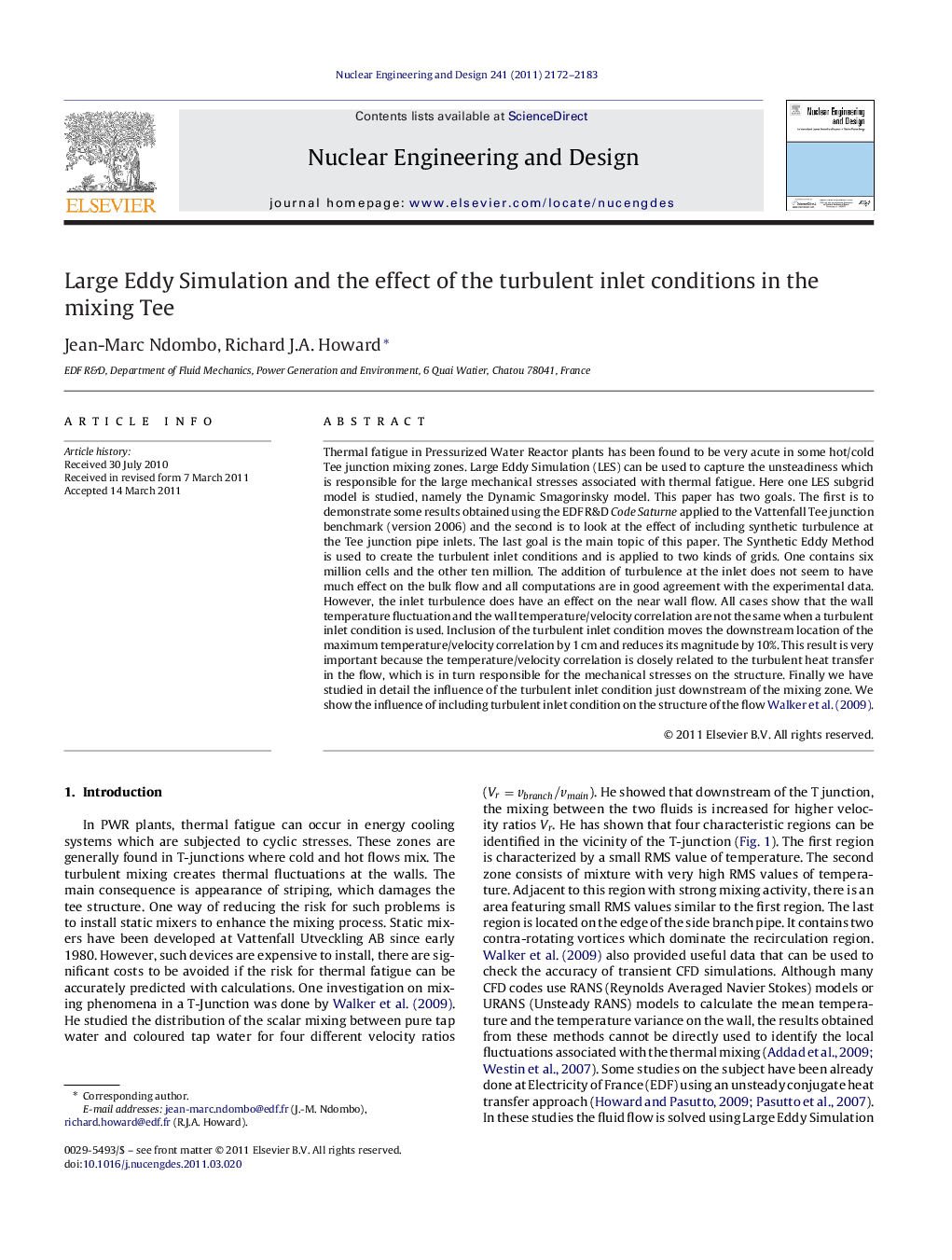| Article ID | Journal | Published Year | Pages | File Type |
|---|---|---|---|---|
| 298111 | Nuclear Engineering and Design | 2011 | 12 Pages |
Thermal fatigue in Pressurized Water Reactor plants has been found to be very acute in some hot/cold Tee junction mixing zones. Large Eddy Simulation (LES) can be used to capture the unsteadiness which is responsible for the large mechanical stresses associated with thermal fatigue. Here one LES subgrid model is studied, namely the Dynamic Smagorinsky model. This paper has two goals. The first is to demonstrate some results obtained using the EDF R&D Code Saturne applied to the Vattenfall Tee junction benchmark (version 2006) and the second is to look at the effect of including synthetic turbulence at the Tee junction pipe inlets. The last goal is the main topic of this paper. The Synthetic Eddy Method is used to create the turbulent inlet conditions and is applied to two kinds of grids. One contains six million cells and the other ten million. The addition of turbulence at the inlet does not seem to have much effect on the bulk flow and all computations are in good agreement with the experimental data. However, the inlet turbulence does have an effect on the near wall flow. All cases show that the wall temperature fluctuation and the wall temperature/velocity correlation are not the same when a turbulent inlet condition is used. Inclusion of the turbulent inlet condition moves the downstream location of the maximum temperature/velocity correlation by 1 cm and reduces its magnitude by 10%. This result is very important because the temperature/velocity correlation is closely related to the turbulent heat transfer in the flow, which is in turn responsible for the mechanical stresses on the structure. Finally we have studied in detail the influence of the turbulent inlet condition just downstream of the mixing zone. We show the influence of including turbulent inlet condition on the structure of the flow Walker et al. (2009).
► LES of Tee junctions can easily reproduce the bulk flow. ► The presence or absence of a turbulent inlet condition has an affect on the wall heat transfer. ► The maximum heat transfer moves 1 cm and reduces by 10% when a turbulent inlet is used.
